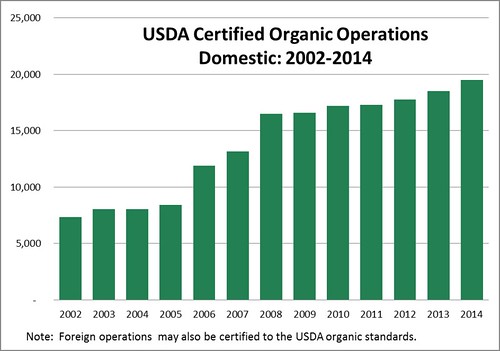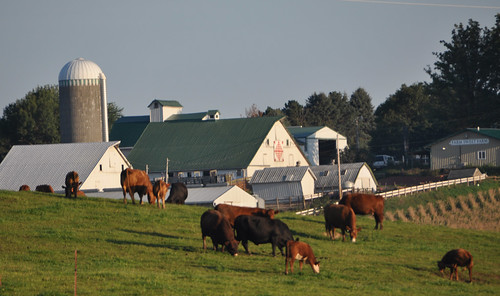
With 19,474 certified organic operations in the United States and nearly 28,000 certified organic operations from more than 120 countries around the globe, organic agriculture has seen enormous growth and success over the last two years.
For years, the organic industry has experienced enormous growth, defying expectations and creating exciting opportunities for producers and entrepreneurs around the world. 2014 was another record year for the organic community, with 19,474 certified organic operations in the United States and nearly 28,000 certified organic operations from more than 120 countries around the globe.
The retail market for organic products is now valued at more than $39 billion in the U.S. and over $75 billion worldwide. With its rapidly growing market and high consumer interest, USDA is focused on helping this area of agriculture achieve even greater success. In May 2013, Agriculture Secretary Tom Vilsack issued guidance that identified organic priorities for the Department, including training and outreach, growing the organic sector, reducing paperwork, improving research, and gathering data.
USDA’s Organic Working Group, which I have the honor of chairing, has been working across USDA agencies to proactively implement the Secretary’s vision. We’ve made great strides in just the last two years. My agency, the Agricultural Marketing Service, also oversees USDA’s National Organic Program, the bedrock regulatory program responsible for developing and enforcing clear standards and expanding trade opportunities to create new markets for U.S. organic operations.
Below are examples of the USDA’s successes and our commitment to growing organic agriculture:
Organic Research
Over the last two years, USDA invested $81.5 million in research to support organic production, including efforts to develop sustainable nutrient management in organic grain cropping, livestock, and reduced-tillage systems, as well as projects to improve the productivity and success of organic agriculture.
USDA’s National Agricultural Statistics Service released its third Organic Producer Survey, which will help us evaluate and establish organic crop insurance programs, in addition to providing timely and reliable information to the industry.
Streamlining Services
In the last two years, more than 1,100 farms have benefitted from $15 million in assistance through USDA’s Natural Resources Conservation Service (NRCS) Environmental Quality Incentives Program Organic Initiative. NRCS also streamlined their conservation activity plans for producers who are transitioning to organic farming practices.
Simplifying Certification
In the last two years, USDA Rural Development awarded $27 million in grants and loans to support organic producers and handlers.
In 2014, AMS issued over 9,000 reimbursements totaling over $7 million to defray certification costs for organic producers and handlers. Our Sound & Sensible initiative also awarded project contracts to 14 organizations to create tools and resources that help make organic certification more accessible, attainable, and affordable.
Organic Education and Resources
In 2012, AMS sponsored the launch of the Organic Literacy Initiative training and outreach program to help USDA employees better understand and serve organic operators. Over 30,000 USDA staff members have taken the training.
In 2013, the Organic Working Group established an online “one-stop-shop” at www.usda.gov/organic, which features USDA’s full range of services for organic producers.
Serving Organic Markets
USDA continues to expand markets for American organic products abroad, adding to the list of agreements that increase market access for U.S. producers. This Administration has secured trade arrangements with five countries so far: Canada, the European Union, Japan, Korea, and Switzerland.
AMS Market News provided market and pricing information for more than 250 organic products and developed plans to include even more data.
USDA’s Risk Management Agency released several new options to provide effective insurance coverage for organic crops and better risk management tools for organic producers.
That’s quite a list—and there is still more to come! Moving forward, we will continue to develop more comprehensive resources for organic stakeholders and incorporate critical organic research needs across USDA’s programs. Our commitment to organic agriculture has been critical to the sector’s growth, and I look forward to seeing what we can achieve in the coming years.

Over 10,000 farms have benefited from USDA’s streamlined services and our efforts to simplify organic certification.
No comments:
Post a Comment
Note: Only a member of this blog may post a comment.